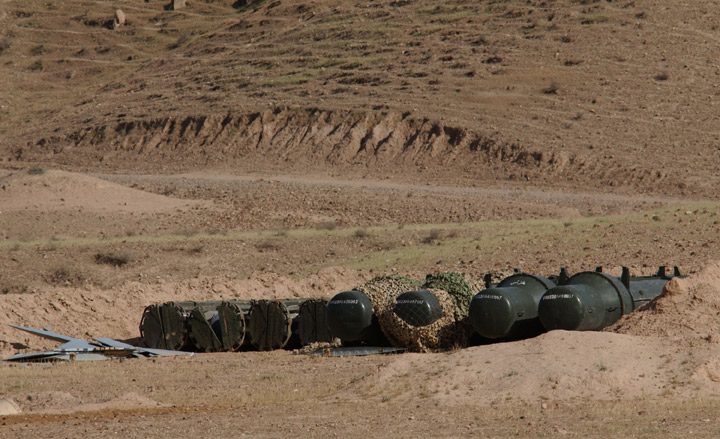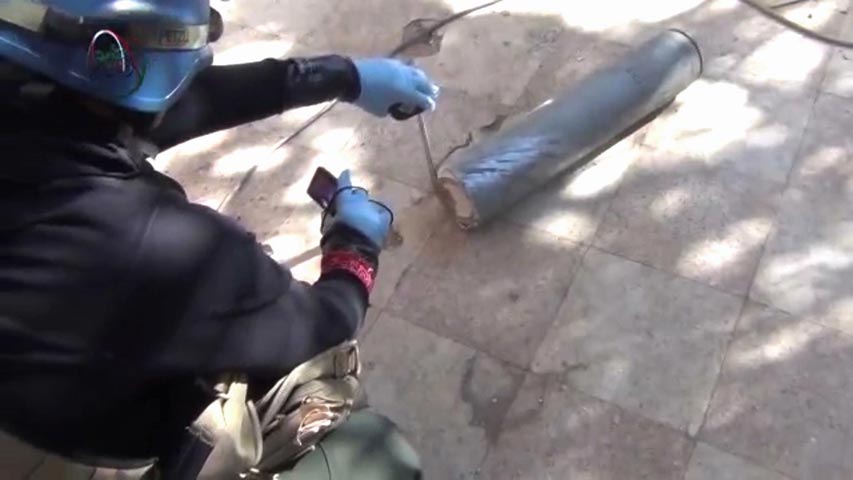THE HAGUE, Netherlands – UN inspectors have confirmed they found “clear and convincing evidence” of a sarin nerve gas attack in Syria last month, adding urgency to moves to neutralize the country’s stock of chemical weapons.

Only seven countries worldwide have formally admitted stockpiling chemical weapons and all are in the process of destroying them or have completed destruction.
Here is an overview of global arsenals of chemical weapons and progress in the risky and time-consuming process of neutralizing them:
WHO HAS CHEMICAL WEAPONS?
According to the Organization for the Prohibition of Chemical Weapons, Albania, India, Iraq, Libya, Russia and the United States, along with a country identified by the OPCW only as “a State Party” but widely believed to be South Korea, have declared stockpiles of chemical weapons to the Hague-based organization that polices the treaty outlawing such weapons.
WHAT ABOUT SYRIA?
The OPCW, which has 189 member states, cannot check countries that are not party to the Chemical Weapons Convention for possible stockpiles. Syria does not belong to the convention but has now said it is joining.
Click here for our ongoing coverage of the crisis in Syria
Other non-signatories include North Korea, Angola, Egypt and South Sudan. Israel and Myanmar have signed but not ratified the convention.
Watch below: Dr. Walter Dorn from the Royal Military College breaks down the alleged large-scale chemical weapons used in Syria.
WHAT DO COUNTRIES HAVE IN THEIR STOCKPILES?
Between them, the seven signatory nations have declared 8.67 million chemical weapons-related items including containers and munitions and 71,196 metric tons of toxic chemical agents. Weapons include mustard gas and nerve agents like sarin and VX.
More: What chemical weapons does Syria have, and what does it do with them?
Russia and the United States have the biggest stockpiles. The U.S. stockpile reached about 31,500 tons, according to the Army. Russia, by comparison, has said it amassed about 44,000 tons.
HOW MUCH HAS BEEN DESTROYED SO FAR?
According to the OPCW, 57,740 metric tons, or 81.1 per cent, of the world’s declared stockpile of chemical agents have been verifiably destroyed by the end of July.
Albania, India and “a third country” – believed to be South Korea – have completed destruction of their declared stockpiles. An OPCW report released earlier this year said the United States had destroyed about 90 per cent of its stockpile, Russia had destroyed 70 per cent of its stockpile and Libya 51 per cent.
Read more: How do you destroy chemical weapons?
Iraq is still in discussions with the OPCW about the best way to destroy its stockpile.
DO NATIONS ONLY HAVE TO DESTROY WEAPONS STOCKPILES?
Thirteen OPCW members have also declared a total of 70 chemical weapons production facilities. The organization says all 70 have been taken out of commission including 43 destroyed altogether and 21 converted to peaceful purposes.
More: Understanding how chemical weapons work
Warning: This unedited raw video shows the effects of toxic gas on people, and contains violent and graphic images that may be disturbing to some people. It is intended for an adult audience only.





Comments